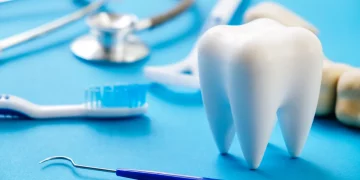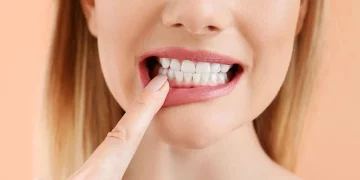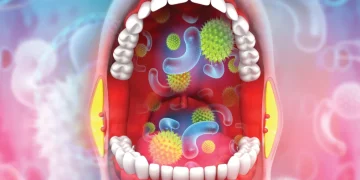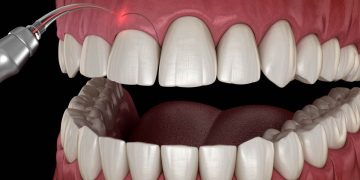Bleeding gums are one of the most common oral health concerns, yet they’re also one of the most misunderstood. Many people notice a little blood when brushing or flossing and simply dismiss it as “normal.” But in reality, bleeding gums are almost always a signal that something needs attention—whether it’s your brushing technique, your daily habits, or an underlying health condition.
This comprehensive guide explores why your gums bleed, what it means for your health, and what you can do to restore your gums to optimal condition. Understanding the root cause is the first step toward preventing long-term problems like gum disease and tooth loss.
1. Common Causes: Why Do Gums Bleed in Everyday Life?
Bleeding gums don’t always indicate a major problem. Sometimes the cause is simple, temporary, and easily fixable. Understanding these common triggers can help you pinpoint why you’re seeing blood on your toothbrush or floss.
1.1 Gingivitis (Early Gum Disease)
Gingivitis is the most frequent cause of bleeding gums. It occurs when plaque—a sticky film of bacteria—accumulates along the gumline. If plaque is not removed through daily brushing and flossing, it irritates the gums, leading to:
- Redness
- Swelling
- Tenderness
- Bleeding when brushing or flossing
This early stage of gum disease is reversible, but only with consistent care.
1.2 Poor or Inconsistent Oral Hygiene
Even missing a few days of flossing can allow bacteria to multiply. This leads to minor inflammation that may suddenly reveal itself through bleeding.
Other hygiene mistakes include:
- Brushing too quickly
- Skipping tongue cleaning
- Neglecting gumline areas
- Using a worn-out toothbrush
1.3 Brushing Too Hard
Some people think aggressive brushing equals better cleaning. In reality, applying too much pressure can scratch the gums and cause bleeding. Soft-bristled toothbrushes are always recommended.
1.4 New Flossing Routine
If you’ve recently begun flossing after a long break, your gums may bleed for several days. This is normal—your gums are adjusting to the removal of plaque and bacteria.
1.5 Hormonal Changes
Hormonal fluctuations—especially during pregnancy, puberty, or menstruation—can increase gum sensitivity. This can make the gums more prone to bleeding even when oral hygiene is good.
1.6 Medication Effects
Certain medications can cause gum bleeding or reduce saliva flow, making gums more vulnerable to irritation. These may include:
- Blood thinners
- Antidepressants
- Antihistamines
- High blood pressure medications
If bleeding started after beginning a new medication, it’s worth discussing with your healthcare provider.
2. Serious Causes: When Does Gum Bleeding Signal a Bigger Problem?
While many cases of bleeding gums are harmless and reversible, others can indicate deeper health issues that require prompt attention.
2.1 Periodontitis (Advanced Gum Disease)
If gingivitis is left untreated, it can progress into periodontitis—a more serious condition where infection damages the gums, bone, and supporting tissue.
Signs include:
- Persistent bleeding
- Gum recession
- Pus between teeth
- Loose or shifting teeth
- Persistent bad breath
Periodontitis requires professional treatment and cannot be resolved with home care alone.
2.2 Vitamin Deficiencies
Lack of certain vitamins weakens gum tissue and blood vessels.
- Vitamin C deficiency causes fragile gums and delayed healing.
- Vitamin K deficiency affects blood clotting, making gums bleed more easily.
If paired with fatigue or other systemic symptoms, nutritional deficiencies may be involved.
2.3 Systemic Health Conditions
Some health problems show early signs in the mouth:
- Diabetes: High blood sugar increases inflammation and infection risk.
- Blood disorders: Conditions like leukemia can cause unusual gum bleeding.
- Immune disorders: Autoimmune diseases may inflame gum tissue.
If your gums bleed frequently despite good oral hygiene, deeper causes should be investigated.
2.4 Chronic Dry Mouth
Dry mouth increases bacterial concentration, raising the risk of gum irritation and bleeding. It may be caused by:
- Medications
- Dehydration
- Sjögren’s syndrome
- Chemotherapy or radiation treatment
2.5 Tobacco Use
Smoking or chewing tobacco weakens the immune response in the gums, causing:
- Poor healing
- Increased plaque buildup
- Higher susceptibility to gum disease
Bleeding may appear once inflammation becomes severe.
3. Home Care: What Can You Do at Home to Stop Gum Bleeding?
Many cases of bleeding gums can be managed effectively with thoughtful home care. These strategies focus on reducing inflammation, controlling bacteria, and strengthening gum tissue.
3.1 Improve Your Brushing Technique
- Brush twice daily using a soft-bristle toothbrush.
- Use small circular motions along the gumline.
- Avoid scrubbing too aggressively—gentle pressure is enough.
Electric toothbrushes with pressure sensors can help prevent overbrushing.
3.2 Floss Every Day
Daily flossing removes plaque between teeth where brushes can’t reach. If gums bleed initially, continue consistently—bleeding usually decreases within a week as inflammation improves.
3.3 Use Antibacterial Mouthwash
Mouthwash helps reduce bacteria and soothe inflamed gums. Look for products containing:
- Chlorhexidine (for short-term treatment)
- Essential oils
- Cetylpyridinium chloride
Avoid mouthwashes high in alcohol if you have dry mouth.
3.4 Increase Vitamin Intake
- Eat more fruits and vegetables rich in vitamin C (berries, citrus, peppers).
- Get vitamin K from leafy greens (spinach, kale, broccoli).
- Consider supplements if recommended by a healthcare provider.

3.5 Stay Hydrated
Water helps wash away food particles and keeps saliva levels balanced. Sip throughout the day to maintain moisture in the mouth.
3.6 Replace Your Toothbrush Regularly
Replace your toothbrush every 3 months—or sooner if bristles flare. Worn bristles clean poorly and irritate gums.
3.7 Warm Saltwater Rinses
Saltwater reduces bacteria and soothes inflamed gums. Mix 1 teaspoon of salt in a cup of warm water and rinse gently.
4. Medical Treatment: When Should You See a Dentist?
If bleeding gums persist for more than one to two weeks despite good home care, it’s time to seek professional evaluation.
4.1 Professional Dental Cleaning
A hygienist removes hardened plaque (tartar) that ordinary brushing cannot eliminate. This is often enough to reverse mild gingivitis.
4.2 Scaling and Root Planing
For more advanced gum disease, deep cleaning below the gumline removes bacteria and helps the gums reattach to the teeth. This is essential for treating periodontitis.
4.3 Laser Gum Therapy
Laser technology can target infected gum pockets with precision, promoting faster healing and reduced discomfort.
4.4 Antibiotic Therapy
Dentists may prescribe:
- Antibacterial gels
- Oral antibiotics
- Medicated mouth rinses
These help control infection in severe cases.
4.5 Treating Underlying Health Conditions
For systemic causes such as diabetes or vitamin deficiencies, managing the primary condition is crucial to restoring gum health.
4.6 Medication Review
If medication is contributing to bleeding gums, your doctor may adjust doses or recommend alternatives.
5. Prevention: How Can You Keep Your Gums Healthy Long-Term?
Once your gums have healed, consistent preventive care helps ensure bleeding does not return.
5.1 Maintain Strong Daily Habits
- Brush thoroughly twice a day.
- Floss at least once a day.
- Use a water flosser if traditional floss is difficult.
5.2 Schedule Regular Dental Checkups
See your dentist every six months—or more often if you have a history of gum disease.
5.3 Eat a Balanced, Nutrient-Rich Diet
Foods high in vitamins C, D, and K, along with omega-3 fatty acids, help strengthen gum tissue and support immunity.
5.4 Quit Smoking
Stopping tobacco use dramatically improves gum health and reduces the risk of periodontal disease.
5.5 Manage Stress
Stress affects oral hygiene habits and weakens the immune system. Consider:
- Meditation
- Regular exercise
- Proper sleep
- Deep breathing routines
5.6 Monitor Hormonal Changes
During pregnancy or other hormonal shifts, schedule more frequent dental visits to keep gum inflammation under control.













































Discussion about this post